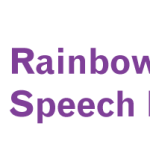HELP! MY CHILD IS STUTTERING
 You may have been talking to your child recently when they started repeating the sounds at the start of the word (like th-th-th-this), or perhaps the whole word (like like like like this). Maybe they were excitedly telling you about something from their favourite TV show or something that happened at day care when they couldn’t quite get their words out properly. When a child first starts stuttering it can be quite confronting and inconsistent. Sometimes their stutter can come and go with no rhyme or reason! So, what actually is stuttering? To answer this we need to ask, is it just normal dysfluency or developmental stuttering? Or is it a persistent stutter and should we seek help?
You may have been talking to your child recently when they started repeating the sounds at the start of the word (like th-th-th-this), or perhaps the whole word (like like like like this). Maybe they were excitedly telling you about something from their favourite TV show or something that happened at day care when they couldn’t quite get their words out properly. When a child first starts stuttering it can be quite confronting and inconsistent. Sometimes their stutter can come and go with no rhyme or reason! So, what actually is stuttering? To answer this we need to ask, is it just normal dysfluency or developmental stuttering? Or is it a persistent stutter and should we seek help?
Everyone has normal dysfluencies. Interjections such as um, uh, or like, revisions such as “I can – I did it”, or phrase repetitions/ restarts such as “I did – I did it” are common dysfluency types seen in children (and adults!). Core stuttering behaviours or stuttered dysfluencies that are more commonly seen in people who stutter are:
- part or whole word repetitions such as “I d-d-d-did it” or “I did-did-did-did it”
- prolongations such as “I ssssssssssssaid that…”
- blocks such as “I d*id it” where the airflow is completely blocked off.
These behaviours are a key difference between a normal dysfluency and a stutter. Stuttering is a disorder in the rhythm, co-ordination and timing of speech where a person knows exactly what they want to say, but at the time is unable to move forward in their speech due to involuntary repetition, blocking or prolongation of sounds or words (WHOICD,1977).

Children who stutter may continue to present with normal dysfluencies but at a higher than normal rate; we call these secondary stuttering behaviours or coping behaviours. These interjections, revisions or restarts can co-occur with core stuttering behaviours, alongside non-verbal secondary behaviours such as:
- associated body movements – tense hand or arm movements or head movements
- loss of eye contact and facial contortions – particularly during blocks
- word avoidance – where the child with a stutter is aware of particular words that they get stuck on so they change what they will say to avoid that word.
From Yaruss & Reardon (2010), Young Children Who Stutter: Information and Support for Parents. New York: National Stuttering Association (NSA).
So, you may be thinking, “does my child need therapy?” The short answer is… maybe. There are a number of factors that increase the risk of normal dysfluencies developing into a persistent stutter (a visual representation of this can be seen in the diagram above from Yaruss and Reardon, 2010). However, some studies do show that as many as 75-80% of preschool children who begin stuttering will stop within 12-24 months. You may also be asking, “but WHY is my child stuttering!?” This great question (and more) will be answered in some future blog posts but the most important thing to remember, for now, is that stuttering is not caused by parents! More on this later, watch this space!
References
Guitar, B. (2014). Stuttering: An Integrated Approach to Its Nature and Treatment. Baltimore: Lippincott, Williams & Wilkins (4th Ed)
World Health Organization. (1977). Manual of the international statistical classification of diseases, injuries, and causes of death (Vol. 1). WHO Geneva.
Yairi, E. & Ambrose, N. (2005). Early Childhood Stuttering: For Clinicians By Clinicians, ProEd, Austin, TX.
Yaruss, J. S., & Reardon, N. (2010). Young Children Who Stutter: Information and Support for Parents. New York: National Stuttering Association (NSA).
Yaruss, J. S., & Reardon-Reeves, N. (2017). Early childhood stuttering therapy: A practical guide. Stuttering Therapy Resources, Incorporated.
Written by Jonathon Cronk – Speech Pathologist


